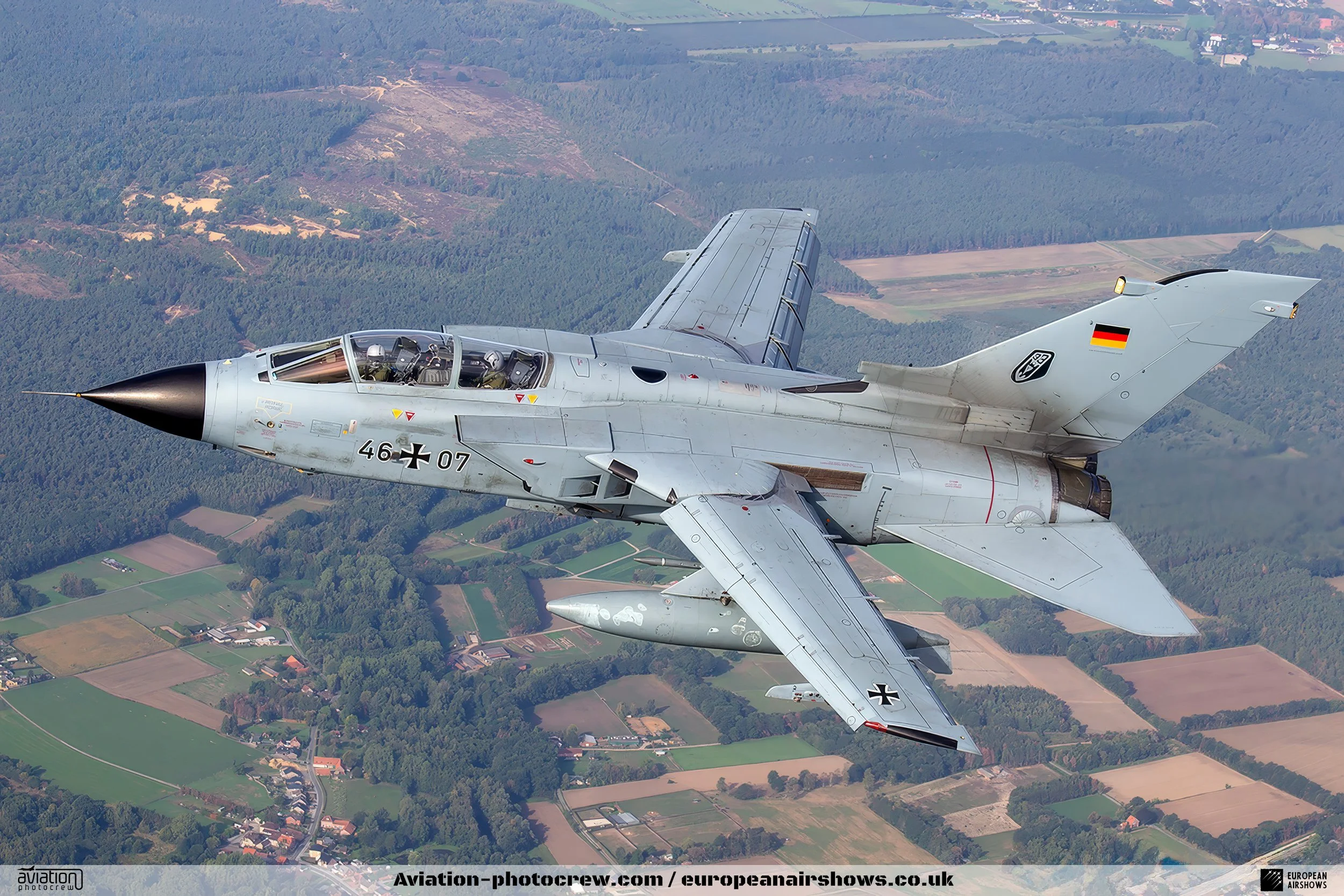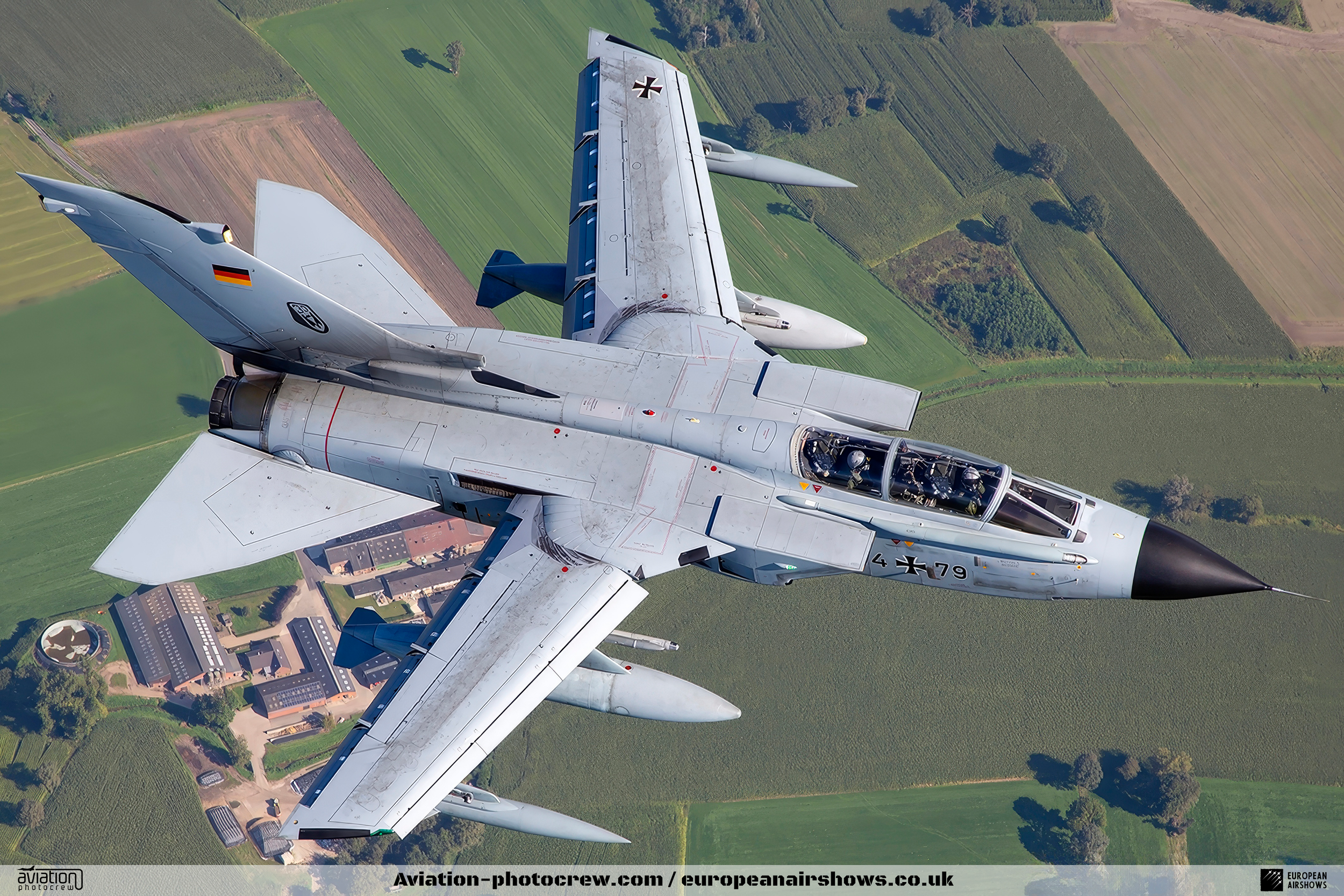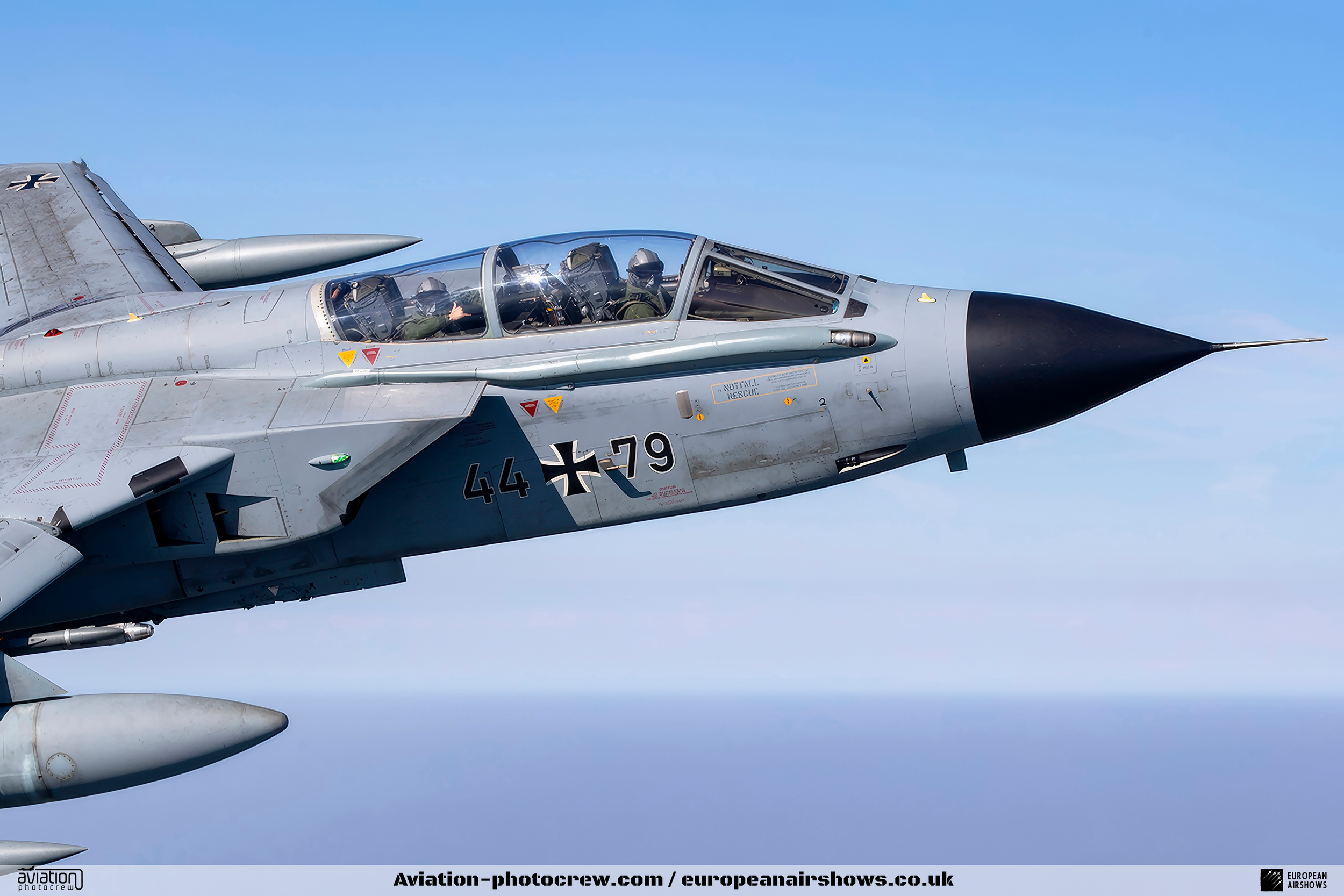
German Air Force Tornado Solo Display
Tornado Solo Display
The German Air Force Tornado Solo Display team is based out of Taktisches Luftwaffengeschwader 33 in Büchel and demonstrates the Tornado IDS aircraft. The team was formed in 2024 to showcase the aircraft at the ILA Berlin airshow; however, the concept of a solo display grew in 2025, leading to plans for performances at additional events, including airshows beyond Germany. This initial season serves as a trial, and if it proves successful, the team is set to undertake a full display season in 2026.
The display lasts approximately 8 minutes and features a range of maneuvers including high-speed passes, slow high alpha passes, tight high G turns, and half Cubans. These maneuvers are performed to highlight the Tornado IDS's impressive capabilities, with a particular emphasis on its variable-sweep wing, which adjusts during the flight to optimize performance across different maneuvers. This unique feature underscores the aircraft's versatility and engineering, making it a focal point of the team's demonstrations.
About the Tornado
The Panavia Tornado is a family of twin-engine, variable-sweep wing multirole combat aircraft, jointly developed and manufactured by Italy, the United Kingdom, and West Germany. It was designed by Panavia Aircraft GmbH, a tri-national consortium comprising British Aerospace (formerly British Aircraft Corporation), MBB of West Germany, and Aeritalia of Italy. The Tornado exists in three primary variants: the Tornado IDS (Interdictor/Strike) fighter-bomber, the Tornado ECR (Electronic Combat/Reconnaissance) specialized for suppression of enemy air defenses (SEAD), and the Tornado ADV (Air Defence Variant) interceptor. Introduced in the late 1970s, the aircraft was intended to fulfill a variety of roles, including low-level penetration, reconnaissance, and electronic warfare, making it a highly adaptable platform for multiple air forces.
Development of the Tornado began in the late 1960s as the partner nations sought a common multirole combat aircraft to replace aging fleets such as the Lockheed F-104 Starfighter. The aircraft’s first flight occurred on 14 August 1974, and it entered service between 1979 and 1980. The collaborative effort allowed the sharing of technological expertise and costs among the three countries, with production distributed across their industries. In addition to the original partners, the Royal Saudi Air Force (RSAF) became the sole export customer, acquiring the Tornado to bolster its own capabilities.
A standout feature of the Tornado is its variable-sweep wing design, which enables it to adjust its wing configuration in flight for optimal performance across different mission profiles—low-speed, low-altitude strikes or high-speed, high-altitude engagements. Powered by two Turbo-Union RB199 afterburning turbofan engines, the aircraft boasts excellent range and thrust. Its advanced avionics, including a navigation and attack system, enhance its precision and effectiveness in combat, distinguishing it as a sophisticated warplane of its era.
The Tornado has seen extensive operational use in numerous conflicts, demonstrating its versatility and reliability. It played significant roles in the Gulf War (1991), the Bosnian War (1992–1995), the Kosovo War (1999), the Iraq War (2003–2011), and the Libyan Civil War (2011). Employed for missions ranging from close air support and interdiction to reconnaissance and SEAD, the aircraft has been operated primarily by the air forces of the United Kingdom, Germany, Italy, and Saudi Arabia. Its combat record underscores its importance as a mainstay of NATO and allied air forces during the late 20th and early 21st centuries.
Specifications
Crew
2
Length
16.72 m (54 ft 10 in)
Wingspan (spread)
13.91 m (45 ft 7.5 in)
Height
5.95 m (19 ft 6 in)
Max Speed
Mach 2.2 (2,400 km/h, 1,490 mph) at altitude
Combat Range
1,390 km (870 mi) typical
Service Ceiling
15,240 m (50,000 ft)
Armament Capacity
7 hardpoints
Tornado in the German Air Force
The German Air Force (Luftwaffe) has operated the Panavia Tornado since its introduction in the 1980s, reflecting Germany’s role as an original partner in the aircraft’s development. The Luftwaffe received its first Tornados in 1980, integrating them as a critical component of its tactical air capabilities. Germany initially acquired 212 Tornado IDS variants for strike missions and 35 Tornado ECR variants for electronic warfare and SEAD roles, replacing older aircraft like the Fiat G.91 and Lockheed F-104 Starfighter. The adoption of the Tornado bolstered the Luftwaffe’s ability to conduct multirole operations within NATO’s framework.
The Luftwaffe has utilized the Tornado in a variety of international missions, marking significant milestones in its post-World War II operational history. During the 1999 NATO bombing of Yugoslavia, German Tornados undertook reconnaissance and SEAD missions, representing the Luftwaffe’s first combat deployment since 1945. More recently, the aircraft has supported reconnaissance efforts in Afghanistan, Syria, and Iraq, notably in operations against ISIS. Equipped with advanced systems like the RecceLite pod, the Tornado has provided vital intelligence and surveillance, reinforcing its strategic value to Germany and its allies.
To ensure the Tornado remains effective, the Luftwaffe has pursued multiple modernization initiatives. The ASSTA (Avionics System Software Tornado Ada) upgrades have enhanced the aircraft’s avionics, weapons systems, and self-defense capabilities, adapting it to contemporary combat requirements. As of 2021, Germany maintains a fleet of approximately 85 Tornados. While newer platforms like the Eurofighter Typhoon are gradually taking over, the Tornado is slated to remain in service until at least 2030, with potential replacement by the Future Combat Air System (FCAS) still under consideration, highlighting its enduring role in Germany’s defense strategy.
Did You Know?
- The Tornado was one of the first combat aircraft to incorporate a digital fly-by-wire control system, enhancing its maneuverability and stability.
- It is capable of carrying advanced standoff weapons like the Taurus KEPD 350 cruise missile, allowing it to strike targets from a safe distance.
- The variable-sweep wing design enables the Tornado to perform optimally in both high-speed intercepts and low-speed, low-altitude penetrations.
- In addition to the original partner nations, the Tornado has been exported to Saudi Arabia, which has used it in various regional conflicts.
- The Tornado ECR variant is equipped with specialized systems for electronic warfare, including the ability to detect, locate, and suppress enemy radar systems.








